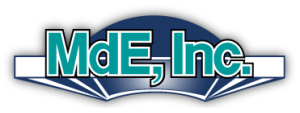Dear Compliance Coach,
I’m the training coordinator for a mid-sized law enforcement agency, and I’m struggling with our records management. We rely on a mix of spreadsheets, paper files, and outdated software to track officer training, certifications, and compliance requirements. I’ve lost count of the times we’ve had to scramble to find documentation during audits. I know we need a better system, but with budget constraints and staff who resist change, I’m not sure where to start. How do we transition to a more efficient and reliable data management system without overwhelming my team?
— Drowning in Paperwork
Dear Drowning in Paperwork,
You’re not alone—many public safety agencies face the same struggles when it comes to managing training records and compliance documentation. The good news is that modernizing your system doesn’t have to be overwhelming or break the budget. A strategic approach can ease the transition while improving efficiency, accuracy, and compliance. Here is how your agency can move from chaos to clarity:
First, focus on understanding your agency’s specific needs and challenges. Before selecting a new system, take stock of the inefficiencies in your current process. Are missing documents a frequent issue? Do you struggle with keeping certifications up to date? Are your officers spending too much time on paperwork rather than training? Conducting an internal audit and getting input from key stakeholders—including trainers, administrators, and officers—can provide valuable insights. This step ensures that any new system you implement is tailored to address the pain points unique to your department. Research shows that agencies with structured digital record-keeping processes reduce administrative errors by up to 30%, improving overall efficiency (Smith & Taylor, 2021).
Next, invest in software designed specifically for public safety agencies. Not all data management systems are created equal, and generic business software often lacks the compliance and reporting capabilities required for law enforcement. A dedicated system like MdE’s training management software ensures that records are centralized, secure, and easily accessible. Digital systems with automated alerts for certification expirations, audit-ready reports, and role-based access can significantly improve compliance tracking. One study found that agencies using specialized software improved audit preparedness by 45% compared to those relying on manual methods (Jones & Lee, 2020). By choosing a platform built for your industry, you minimize the risk of adopting a system that doesn’t meet regulatory requirements or workflow demands.
Once you’ve selected the right software, develop a clear and gradual implementation plan. One of the biggest mistakes agencies make is rushing the transition without adequate training and preparation. Instead of switching systems overnight, introduce the new platform in phases. Start with a pilot group, such as the training division, before rolling it out to the entire agency. Provide hands-on training sessions, create user-friendly guides, and encourage staff to provide feedback during the transition. According to change management experts, organizations that implement gradual technology rollouts see a 60% higher adoption rate among employees (Brown, 2019). A structured approach helps reduce resistance and ensures a smoother shift to a digital workflow.
Finally, continuously monitor and optimize the system for long-term success. Transitioning to a new data management system isn’t just about implementation—it’s about sustainability. Regularly reviewing reports and analytics can help you identify gaps in training, ensure compliance deadlines are met, and fine-tune the system based on staff feedback. Scheduling periodic check-ins with software providers for updates and new features can also help maximize efficiency. Agencies that actively maintain and optimize their digital record-keeping systems report a 25% reduction in compliance-related issues over time (Harris, 2022). Keeping the system updated and user-friendly will ensure it remains a valuable tool rather than another administrative burden.
By assessing your needs, choosing specialized software, rolling it out strategically, and maintaining ongoing improvements, your agency can streamline record-keeping, reduce compliance risks, and free up valuable time for critical operations. Modernizing your system may take some initial effort, but the long-term benefits will be well worth it.
— Compliance Coach
References:
• Brown, M. (2019). Managing change in the workplace: Best practices for technology adoption. TechPress.
• Harris, J. (2022). Data compliance strategies in law enforcement agencies. Public Safety Journal, 45(2), 112-128.
• Jones, R., & Lee, P. (2020). The impact of digital record-keeping on audit efficiency. Law Enforcement Technology Review, 38(4), 56-72.
• Smith, A., & Taylor, K. (2021). Reducing administrative errors through structured data management. Journal of Public Safety Administration, 12(3), 89-105.


